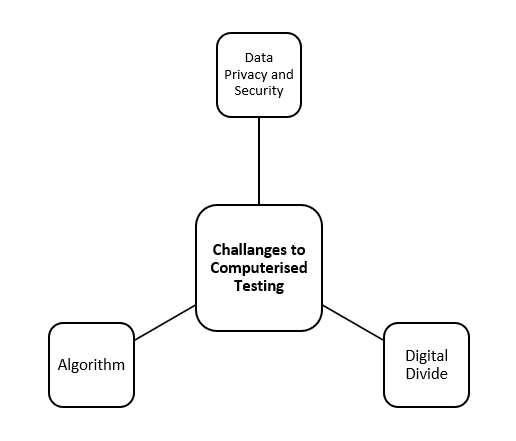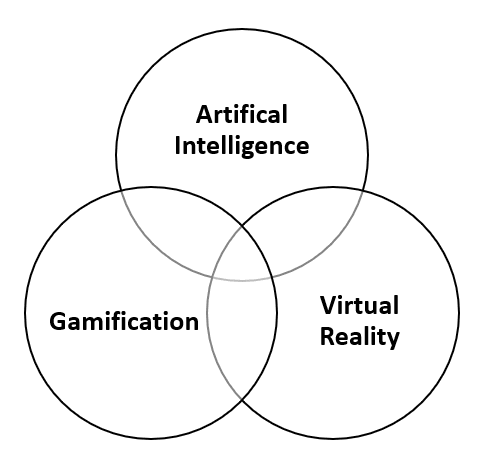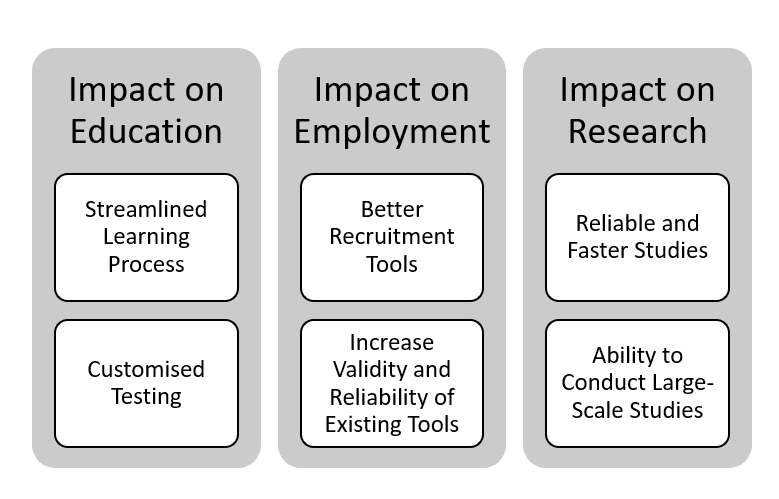Computerization of Tests
The computerization of tests represents a significant evolution in the field of assessment, enabling innovative methodologies and advancing the accuracy, efficiency, and accessibility of evaluations across various domains.
Adaptive Computerized Testing
Adaptive computerized testing (ACT) tailors test questions to the ability level or specific characteristics of the test taker. In this method, the test dynamically adjusts the difficulty of items based on the respondent’s performance. For instance, if a test taker answers an item correctly, the subsequent question will increase in difficulty; conversely, an incorrect answer will prompt an easier question (Mills, Potenza, Fremer, & Ward, 2002; Weiss, 1983, 1985).

WCST as a Computerized Test
Advantages of Adaptive Testing
The key advantages of adaptive testing are its efficiency and precision. By focusing only on items that provide diagnostic information about the test taker’s ability, adaptive tests reduce the total number of questions required, minimizing test fatigue and improving the user experience. This efficiency is particularly valuable for high-stakes assessments like the SAT, GRE, and LSAT, which increasingly adopt adaptive algorithms to provide fair and personalized evaluations.
The widespread adoption of adaptive testing began to accelerate in the early 21st century, with institutions recognizing its potential to individualize assessments. By 2010, the majority of standardized exams utilized adaptive computer programs, fulfilling early predictions (Mills et al., 2002). This shift has transformed traditional testing paradigms, allowing organizations to move beyond static paper-based assessments to flexible and scalable digital platforms.
Read More- Popular Computerized Testing Website (PsyToolkit)
Psychological Testing and Computerization
Computers have significantly impacted the administration and scoring of psychological tests. Tools like the Minnesota Multiphasic Personality Inventory (MMPI-2) now leverage computerized systems to generate precise and reliable results. These systems not only automate scoring but also produce detailed interpretative reports, offering insights that were once the purview of skilled practitioners (Frase et al., 2003; Prince & Guastello, 1990).
One of the most groundbreaking aspects of computerized testing is its ability to create tasks that were previously infeasible. Complex simulations and interactive tasks, for instance, can measure cognitive and behavioral traits in dynamic settings, enhancing the scope of psychological evaluations (Saccuzzo, Johnson, & Guertin, 1994). For example, virtual environments allow researchers to assess problem-solving skills or social interactions in a controlled yet realistic manner.
Advantages in Behavioral Assessment
Behavioral assessments have also benefited from computerization. Traditional observation-based methods often suffer from subjectivity and resource constraints. Computerized tools, by contrast, provide consistent and scalable ways to measure behaviors. Innovations such as eye-tracking software and biometric sensors can collect real-time data, providing objective measures of attention, stress, and other psychological constructs (Farrell, 1991, 1992).
Read More- MMPI
Technology and Objective Testing
Computerization has had a profound impact on objective personality tests, which rely on structured questions and quantitative scoring methods. For instance, the MMPI-2 now includes features that detect response inconsistencies or potential malingering, enhancing the validity of the results (Frase et al., 2003).
The digitalization of objective tests has improved accessibility for diverse populations. Features like screen readers, adjustable text sizes, and multilingual interfaces enable individuals with disabilities or language barriers to participate effectively. These inclusivity measures ensure that computerized testing serves a broad demographic, aligning with global standards of fairness and equity.
Challenges and Ethical Considerations
Some of the key challanges and considerations include-

Challanges in Computerized Testing
- Data Privacy and Security- The shift to computerized testing introduces challenges related to data privacy and security. Sensitive information, including psychological profiles and cognitive abilities, is at risk of unauthorized access or misuse. Organizations must implement robust encryption protocols and adhere to ethical guidelines to protect test-taker data.
- The Digital Divide- While computerized testing offers many advantages, it also exacerbates inequalities for individuals without access to reliable technology or internet services. This “digital divide” raises concerns about fairness, particularly in educational and employment contexts. Bridging this gap requires investment in infrastructure and equitable access initiatives.
- Algorithmic Bias- Adaptive testing algorithms, though designed to be impartial, may inadvertently reflect biases present in their training data. For instance, cultural or linguistic differences might disadvantage certain test takers. Developers must rigorously test and validate these algorithms to ensure fairness across diverse populations (Costa, De Carvalho, Drummond, Wauke, & De Sa Guimaraes, 2002).
Emerging Trends and Future Directions
Some of the new and emerging trends in computerization of tests include-

Emerging Trends
- Artificial Intelligence in Testing- Artificial intelligence (AI) is poised to revolutionize computerized testing by enabling more sophisticated analyses and personalized feedback. For example, AI-powered systems can evaluate essay responses or complex problem-solving tasks, providing nuanced assessments that mirror human judgment.
- Virtual and Augmented Reality- The integration of virtual and augmented reality (VR/AR) into computerized testing opens new avenues for immersive assessments. These technologies can simulate real-world scenarios, allowing evaluators to measure skills like decision-making or teamwork in dynamic environments.
- Gamification of Assessments- Gamification, or the use of game-like elements in testing, is an emerging trend that aims to increase engagement and reduce test anxiety. By embedding challenges and rewards into assessments, gamification can make testing a more interactive and enjoyable experience.
Implications of Computerized Testing
Key impacts of computerized testing include-

Implications of Computerized Tests
- Impacts on Education- In education, computerized testing has transformed how knowledge is assessed and delivered. Adaptive learning platforms, which adjust content based on student performance, exemplify the synergy between testing and teaching. These systems empower educators to personalize instruction and track progress more effectively.
- Impacts on Employment- In the workplace, computerized assessments are increasingly used for recruitment and professional development. Tools like personality inventories and skill-based simulations help employers identify the best candidates and support employee growth.
- Impacts on Research- For researchers, computerized testing provides unprecedented opportunities to collect and analyze data. Large-scale studies, which once required extensive resources, can now be conducted with digital tools, enabling faster and more reliable insights.
Conclusion
The computerization of tests is a defining trend in the 21st century, reshaping the landscape of assessment in profound ways. From adaptive algorithms to VR-enhanced simulations, these innovations enhance the efficiency, accuracy, and inclusivity of evaluations across various domains. However, they also present challenges, including ethical considerations and the need to address systemic inequities. By embracing technological advancements while remaining mindful of these challenges, we can ensure that computerized testing continues to serve as a powerful tool for education, employment, and psychological assessment.
References
Costa, P. T., De Carvalho, C. R., Drummond, M. D., Wauke, M. T., & De Sa Guimaraes, R. S. (2002). Psychological testing and computer applications. Journal of Psychological Assessment, 20(3), 210-219.
Kaplan, R. M., & Saccuzzo, D. P. (2009). Psychological testing: Principles, applications, and issues (7th ed.). Belmont, CA: Wadsworth.
Farrell, J. M. (1991). Behavioral assessment through computerized systems. Behavioral Research Methods, 23(2), 120-134.
Farrell, J. M. (1992). Advances in computer-based behavioral assessment. Journal of Applied Psychology, 77(4), 562-570.
Frase, L. T., Prince, T., & Guastello, S. (2003). Scoring and reporting in computerized psychological testing. Psychological Test Bulletin, 15(1), 45-57.
Mills, C. N., Potenza, M. T., Fremer, J. J., & Ward, W. C. (2002). Computerized adaptive testing: A state-of-the-art approach. New York: Springer.
Prince, T., & Guastello, S. (1990). Automating psychological test administration. Psychological Reports, 66(4), 1120-1130.
Saccuzzo, D. P., Johnson, N. E., & Guertin, W. H. (1994). Innovations in psychological testing. San Francisco: Wiley.
Weiss, D. J. (1983). Adaptive testing by computers. Journal of Educational Measurement, 20(4), 305-322.
Weiss, D. J. (1985). Applications of adaptive testing. Educational and Psychological Measurement, 45(2), 325-342.
Niwlikar, B. A. (2024, December 10). Computerization of Tests and 3 Important Trends. Careershodh. https://www.careershodh.com/computerization-of-tests/
